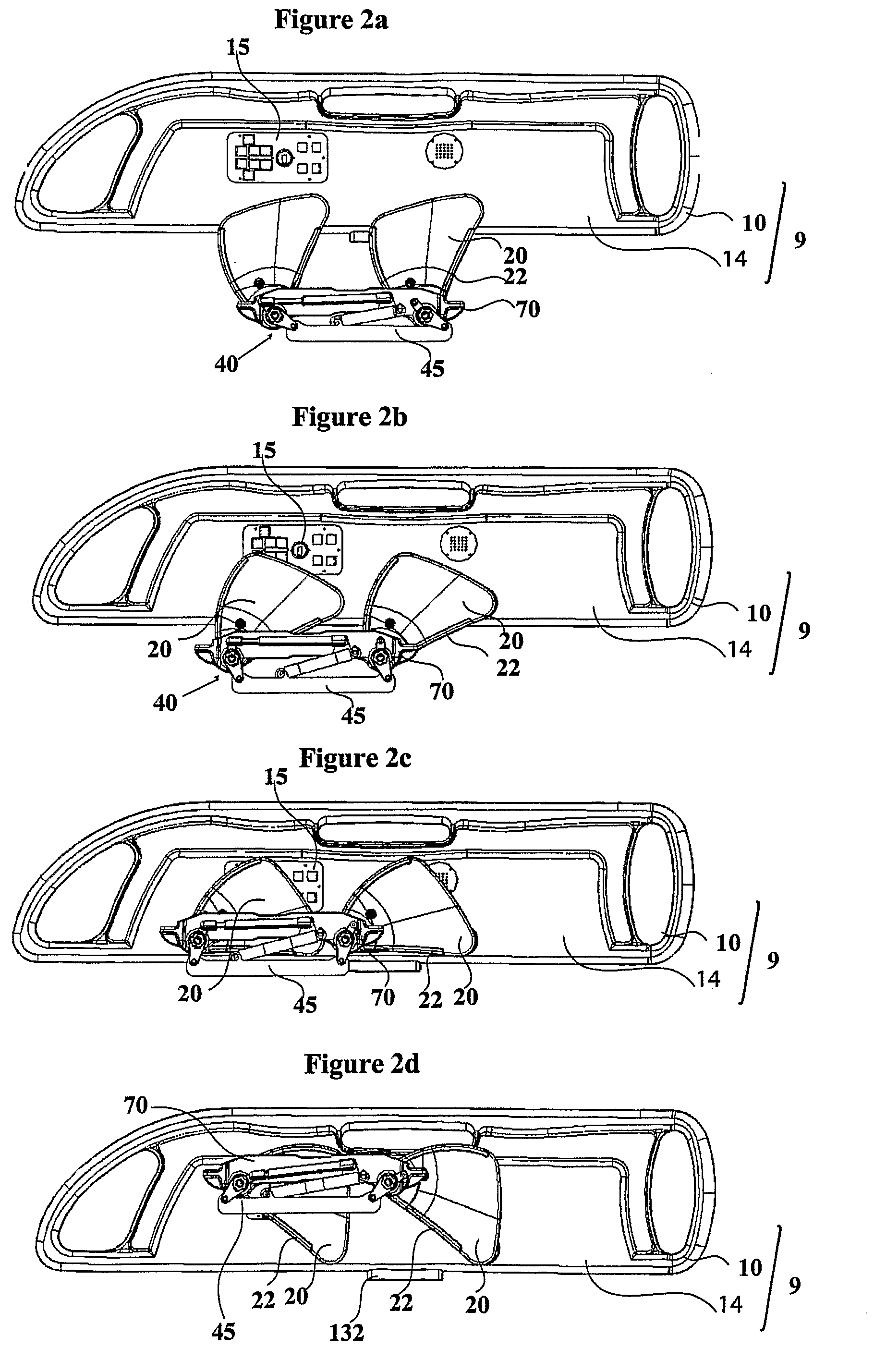Movable siderail apparatus for use with a patient support apparatus
a technology for supporting devices and siderails, which is applied in the direction of fluid mattresses, sofas, transportation and packaging, etc., can solve the problems of pinch points between the siderails and the arms, and safety problems for the patient or other person operating the siderail
- Summary
- Abstract
- Description
- Claims
- Application Information
AI Technical Summary
Benefits of technology
Problems solved by technology
Method used
Image
Examples
Embodiment Construction
Definitions
[0100]The term “siderail” is used to define the part of a siderail apparatus designed to secure the lying surface to ensure the patient does not fall from or exit the lying surface when the siderail apparatus is in its fully or partially deployed positions.
[0101]The term “locking mechanism” is used to define any mechanism configured to allow the siderail apparatus to be locked or unlocked in any predetermined position.
[0102]The term “support arms” is used to define the physical components connecting the siderail body to the mechanism casing through pivots situated in proximity of each end of each of said support arms.
[0103]The term “guiding mechanism” is used to define a means for guiding the siderail body through a lateral movement of the siderail body towards and away from the lying surface during rotational movement of the siderail body.
[0104]The term “inside view” is used to define a view in relation to the siderail apparatus means the view from the side in relative p...
PUM
 Login to View More
Login to View More Abstract
Description
Claims
Application Information
 Login to View More
Login to View More - R&D
- Intellectual Property
- Life Sciences
- Materials
- Tech Scout
- Unparalleled Data Quality
- Higher Quality Content
- 60% Fewer Hallucinations
Browse by: Latest US Patents, China's latest patents, Technical Efficacy Thesaurus, Application Domain, Technology Topic, Popular Technical Reports.
© 2025 PatSnap. All rights reserved.Legal|Privacy policy|Modern Slavery Act Transparency Statement|Sitemap|About US| Contact US: help@patsnap.com



